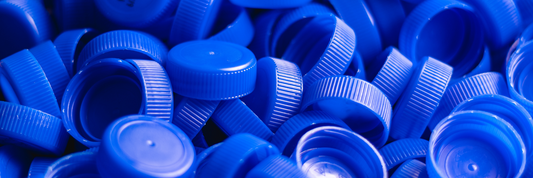Strawberries are delicious, but they tend to spoil quickly if not stored properly. Have you ever bought a box of fresh strawberries only to find them moldy within a few days? If so, you’re not alone! One of the best ways to keep strawberries fresh for longer is by storing them in a glass jar. In this article, we’ll explore why this method works, the best way to store strawberries in a jar, and answer common questions about this storage technique.
- 7 Reasons To Choose Glass Jars For Packing Pickles
- How to Measure The Jar Lids? Guide to Buying Canning Jar Lid
- How to Sterilize Jars Properly? Step By Step Guide
How to Store Strawberries In a Jar
Step 1: Selecting the Right Strawberries
For the best results, choose strawberries that are firm, bright red, and free from bruises or mold. Avoid strawberries that are overly soft, have dark spots, or show any signs of mold, as these will spoil more quickly and can affect the freshness of the other berries.

Step 2: Deciding Whether to Wash Before Storing
One of the most common questions about this method is whether strawberries should be washed before placing them in a glass jar. The answer depends on how long you plan to store them.
- If you plan to eat the strawberries within a few days, you can wash them beforehand. However, it is essential to dry them thoroughly before storage to prevent moisture buildup.
- If you plan to store them for over a week, it is best to avoid washing them until just before consumption. Washing introduces moisture, which can increase the risk of mold growth.

If you choose to wash the strawberries, a vinegar solution can help remove bacteria and pesticide residues:
- Mix one part white vinegar with three parts water in a bowl.
- Soak the strawberries for 5 minutes, then rinse them under cold running water.
- Spread the strawberries on a clean paper towel and let them air-dry completely.
Ensuring that the strawberries are completely dry before storing is crucial for preventing excess moisture inside the jar.
Step 3: Choosing the Right Glass Jar
Select a clean, dry glass jar with an airtight lid. Mason jars or any similar glass container with a secure lid work best.
- Make sure the jar is completely dry before adding strawberries. Even a small amount of moisture inside the jar can lead to condensation, which promotes mold growth.
- A jar with a wide mouth makes it easier to place and remove strawberries without causing bruising.
Step 4: Store Strawberries in Glass Jar
- Place the strawberries whole into the glass jar. Do not cut them, as sliced strawberries release juices that can lead to quicker spoilage.
- Do not overcrowd the jar. Leave some space between the berries to allow for better air circulation.
- Close the jar with a tight-fitting lid.
- Store the jar in the refrigerator, preferably on a middle or lower shelf where the temperature is most stable.

Alternative Method: Storing Strawberries in a Glass Jar with Water
Some people prefer to store strawberries in a glass jar filled with cold water. This method can keep strawberries fresh for up to a week, but requires regular water changes to prevent bacterial growth.
- Fill a clean glass jar halfway with cold filtered water.
- Add unwashed whole strawberries into the jar.
- Seal the jar and store it in the refrigerator.
- Change the water every two days to maintain freshness.
This method helps to keep the strawberries hydrated and firm, but it may not preserve them as long as the dry jar method.
How to Keep Strawberries From Molding In a Jar
To keep strawberries from molding in a jar, follow these steps:
- Wash and dry thoroughly: Rinse the strawberries with water to remove any dirt or chemicals. It’s essential to dry them completely, as moisture accelerates molding.
- Use a paper towel: Line the bottom of the jar with a dry paper towel to absorb any excess moisture.
- Do not overcrowd: Place the strawberries gently in the jar, ensuring they aren’t too tightly packed. Overcrowding can cause bruising and speed up spoilage.
- Store in the refrigerator: Keep the jar in the refrigerator, which is a cool, dry environment ideal for slowing down mold growth.
Comparison with Other Preservation Methods
There are many different methods of preserving strawberries, from using plastic bags, plastic boxes to storing strawberries in the refrigerator. However, each method has its own advantages and disadvantages:
- Plastic bags: Cheap and easy to use but cannot keep strawberries fresh for long due to high humidity and easy air penetration.
- Plastic boxes: Can preserve better than plastic bags but still have problems such as bacteria accumulation and not being airtight enough.
- Glass jars: Provide an airtight environment, keeping the freshness and safety for health.
Why Do Strawberries Last Longer in a Glass Jar?
Glass jars are not only environmentally friendly but also a great way to preserve strawberries. When using glass jars, you will:
- Keep strawberries fresher longer: Glass jars help prevent air and moisture from entering, thereby limiting the growth of mold.
- Avoid chemicals from plastic containers: Plastic can contain some harmful chemicals such as BPA, while glass is completely safe.
- Easy to observe: You can see the strawberries inside the jar without opening the lid, helping to control the condition of the strawberries while keeping the jar sealed.

Is It Safe to Freeze Food in Glass jars? Types of Foods Can Freeze in Glass Jars
Factors Affect The Process Of Preserving Strawberries
- Temperature: High temperatures can cause strawberries to lose water quickly, becoming soft, mushy and easily spoiled. Therefore, strawberries should be stored in a cool place, ideally in the refrigerator at a temperature of about 0-4°C, to help prolong their shelf life while still maintaining their freshness.
- Light: Strong light, especially sunlight, can cause oxidation, reducing the quality and flavor of strawberries. Oxidation can cause the color of strawberries to fade and reduce the vitamin C content. Avoiding direct sunlight helps protect strawberries from rapid spoilage.
- Humidity: High humidity can create favorable conditions for bacteria and mold to grow, leading to faster spoilage of strawberries. However, if too dry, strawberries can also lose water and wilt. Therefore, it is necessary to keep the humidity at a moderate level, by using an airtight container or a glass jar with a lid.
FAQs About How to Keep Strawberries Fresh Longer
How Long Can Strawberries Stay Fresh in a Glass Jar?
Strawberries can stay fresh for 1 to 2 weeks when stored properly in a glass jar.
Should You Put a Glass Jar Containing Strawberries in the Freezer?
No. The freezer can cause strawberries to lose their original flavor and texture.
Are Glass Jars Better Than Plastic Containers For Storing Strawberries?
Yes, glass jars help keep strawberries fresh longer because they are airtight and prevent bacteria from growing.
Which Glass Jar Is Best For Storing Strawberries?
Glass jars with tight-fitting lids like Mason jars are an ideal choice due to their convenience and ability to retain air well.
How Do You Keep Strawberries Fresh For 2 Weeks?
Vinegar bath is one of the method can keep fresh strawberries for up to 2 weeks.
How to Keep Strawberries Fresh With Vinegar
Using a vinegar solution can help keep strawberries fresh longer by killing mold spores and bacteria. Here’s how to do it:
- Prepare a vinegar bath: Mix one part white vinegar with three parts water.
- Soak the strawberries: Submerge the strawberries in the vinegar solution for about 5 minutes. This helps eliminate any mold spores and bacteria that may be on the surface.
- Rinse and dry: After soaking, rinse the strawberries under cold water to remove any vinegar taste. Then, dry them thoroughly with paper towels or a clean kitchen towel.
- Store in a jar: Once the strawberries are dry, you can store them in an airtight glass jar, as mentioned above.
Conclusion
In conclusion, keeping strawberries in a glass jar extends their shelf life significantly, up to three weeks. This simple method minimizes moisture and oxygen exposure, keeping them fresh and flavorful for longer. Embrace the glass jar technique and enjoy strawberries at their peak for weeks to come.









